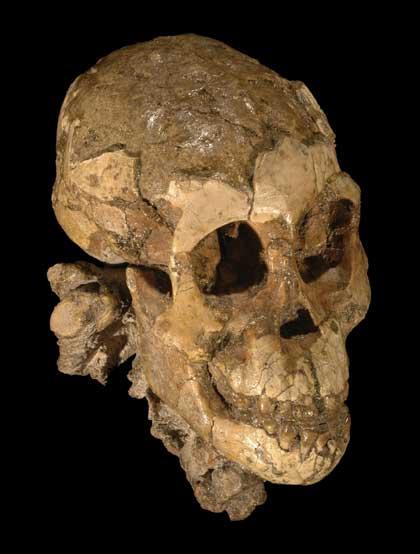Austrolopithecus young

The region called Afar, in Ethiopia, is a great hayedo for paleoanthropologists. There they discovered, in 1974, the most famous fossil of an Australophitecus, known as Lucy. And there they found another surprising fossil in the year 2000: The almost complete skeleton of a young Australophitecus, a child. It was discovered in 2000, but they have worked for five years to completely remove the bones from the soil. Anthropologists have had to compare the fossil with other fossils of the same species (Australophitecus afarensis) to know that it was a child. The comparison makes it clear that when he died unmatured completely, with approximately three years of age, what characterizes this fossil, which keeps information not only about the evolution of species, but also about the development of the body. Youth, for example, is perceived in the brain, which is about three quarters of an adult's brain. In addition, this data places the Australophitecus closer to hominids than chimpanzees, since at this age the size of the brain of chimpanzees is about 90% of the most mature. But, besides being a child, the number of bones that have found the fossil is remarkable. The skull is complete with dentures, all the bones of the trunk, and have found the largest bones in the arms and legs. It is not customary for bones to remain until today. It is possible to die in a flood, the body is trapped in sediments from the beginning, and therefore remains almost entirely. And in anthropology, having many bones is synonymous with much information. In this case, there is sufficient information to answer whether or not the Australopithecus lived in trees, for example. Many say that Lucy, discovered in 1974, had a skeleton to walk on two legs. But Lucy's omophiles did not recover, so it could not be ensured that he presented a body hanging on the branches (monobody) or that he could walk on the ground (corpus of hominids). In the new fossil, however, the shoulder blades are complete and it is observed that this was an intermediate case of two bodies. Adaptation to the trees in which the Australophitecus was losing. The bones have given much more data. Among other things, the hioid, a small bone in the throat, has not been lost. Rarely it lasts, and that is why it is a treasure for anthropologists. The study of this bone allows, to some extent, to analyze the emission capacity of sounds. And you will still have many more keepers. Zeresenay Alemseged and Copyright Authority for Research and Conservation of Cultrual Heritages (ARCCH).
Buletina
Bidali zure helbide elektronikoa eta jaso asteroko buletina zure sarrera-ontzian











